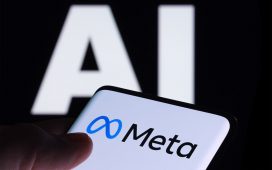It’s a predicament any ambitious startup founder will have been been faced with at one time: you’ve just raised a seed round, you need to build a minimum viable product and you need to quickly build a team to do it. You don’t have an HR person so you just go out and do it yourself. You might hire a few of your old university mates, they might recommend a few of theirs and before you know it you have a team that looks and thinks just like you, slogging away for 12 hours a day and going to the pub afterwards to blow off steam.
This is how you accumulate diversity debt. This is the idea that if you don’t take diversity and inclusion seriously at your early stage, you will grow with a homogenised workforce that will become harder and harder to diversify as cultural values and hiring tendencies bed in.

In order to avoid this it’s best to start thinking about what sort of workforce you want early on, how to hire against those key competencies and behaviours and how to remain consistent and fair as you scale quickly. All of that isn’t easy, but it will save you some massive headaches further down the line. Just ask Uber founder Travis Kalanick.
Here are a few pieces of practical advice for founders looking to build diversity and inclusion into their company from day one.
Hire for mission fit not culture fit
Every startup talks about ‘culture fit’, and the gloss might be starting to come off the concept as hyper-growth, hyper-masculine cultures at Uber, Google and Facebook have accrued serious diversity debt.
“I cringe a little bit when I hear ‘culture fit’,” Hessie Coleman, business manager and former head of people operations at fintech startup Starling Bank said during a panel discussion at the Google for Startups campus yesterday.
“I think in technology in particular, we talk about culture fit a lot. But to the extent that it’s become a cliche. What does it actually mean? I’ve tried to move away from talking about cultural fit and I try to talk about ‘culture add’. Just by changing the framing of what we’re looking for, I think it gives people a little bit more of a case to think about, actually, what do we mean by this?”
“I actually tell our companies to park cultural fit to later,” Keji Mustapha, head of network and operations at venture capital firm Connect Ventures said during the same panel discussion. “I often say to them to start with the competencies: so through the stages of your interview process, the first stage you’re screening for if they can actually do the job. The second stage is really around the values.
“Then, only after that, should you be thinking about cultural fit. If they have the skills, they’ve done it before, and you think they can deliver and show the behaviours you need to kind of achieve your goals, then it’s a case of ‘can I actually hang out with this person’?”
Carolyn Chayot, talent partner at VC firm Atomico and an ex HR manager at both Google and Twitter admitted that she was as responsible as anyone for driving the cult of ‘culture fit’ back in 2005.
“I actually was one of the guilty ones of hiring for culture fit when I started at Google,” she said. “The question I asked my manager was: ‘how do I test for culture fit’? They said, if you were stuck with that person for 24 hours in an airplane or an airport, how would you feel? It led to a very, very similar workforce.
“At Twitter we did the same mistake. But what we did as well is actually realised it a little bit earlier, because of everything that was happening in the tech industry at the time.”
To redress this Chayot pivoted to what she calls “mission fit” instead: at its essence this meant understanding if candidates really believe in what the company is doing, what they’re trying to achieve, and carry a passion for it.
“If you do that, and if you manage to check for this, then you actually can be in a very interesting workforce,” she said. “You will get pockets of people that will feel very close to one another, want to go to the pub together, or do other things together.”
Hire someone to do the hiring early on
Coleman wrote her Masters dissertation project at Reed Business School on the topic of ‘High Performance Culture in Technology ‘Startups’ Through Growth’, placing her in a strong position to talk about the importance of scaling diversity.
In that dissertation she found that until companies reached the 50-100 people maturity stage there tended “not to be a single person in a business that had an HR or people title or responsibility”.
This may sound familiar to many founders that have taken the hiring function into their own hands early on.
Coleman said that when she surveyed larger companies for the dissertation – an admittedly small sample size – on what they would do differently, most of them said they wished they had hired someone earlier to focus on people.
“I think that piece around being thoughtful about it is really important,” she said. “That was the other thing in my research, a lot of people were coming back and saying what they would do differently was to be more thoughtful about hiring and who you’re hiring, as well as actually what you’re hiring them to do.
“The scale-up pressure is real and the temptation to just get bums in seats, the ‘we need somebody yesterday’ mentality is very real. But actually, by taking a step back and being a little bit more considered, about what you’re hiring for, and why and who you’re hiring, I think that can actually really have an incredible benefit.”
Process is king
It may not be top of your to-do list, but thinking about your hiring and onboarding processes early can save some real headaches further down the road, as Mustapha at Connect Ventures said.
“No one really wants to think about process,” she said. “It’s not sexy when you’re thinking about a high-growth startup, but I try and spend a little time getting founders to understand that actually the time that they spend on process at the start will serve them so much better further down the line.”
What does she mean by process? She explained: “It’s about asking: why do you need this person in your role? What sort of differences of thought do you need? What impact is this person getting to have? And all these basic questions, which are really simple, but you do have to take time out to really think about them. Process is king.”
Hire with objectivity
Jane Redding, cofounder of the Talent Stack – a startup that focuses on building talent management toolkits for startups – added: “In 22 years of doing this, working with growth companies, we believe there’s one thing that matters more than anything else: hiring with objectivity.”
She breaks this into four elements. These are: measure what matters most; use tools and techniques to set up a consistent hiring process; leverage technology; and lastly, to consider behaviours free from bias.
She explained: “Consider behaviours that show up when your team interviews a candidate, no matter where they’re from, what their gender is, what their ethnic background is – so whatever diversity quota you’re trying to hit, if you’ve got one, and then you’ll deliver a fair and inclusive hiring process.”
Done right, this should “authentically and automatically garner the right evidence to work out whether you’ve got in front of you the right person” – with the right skills and at the right time for your organisation.
However, this is clearly not a simple process to establish early on. Redding atmitted that the challenge is in creating something which is “agile enough that it works” but that “isn’t too in-depth such that I can’t get around everybody”.
“You have to do all four things together,” she added, “and probably on repeat a few times, so that it genuinely embeds. I genuinely think that you can’t shortcut it, you’ve got to do one of those four things.”
Redding identifies two sides of the coin when you are hiring: first there is your job spec or ad copy: “Usually at a startup, it’s kind of one of the same thing, which is mistake number one, in my opinion, because it needs to be two different things.
“A job spec does serve a different purpose to ad copy. Bluntly it’s the same type of language and that language is all facing the candidate. It’s all about what the candidate’s going to be interested in, what the candidate’s going to do when they get there, why this is amazing, why they should do this role versus any other role in a startup at this point in time that they may be offered.”
The second tool is more internal and requires creating a set of scorecards for measuring if a candidate fits a certain set of behaviours that are key to success in your organisation.
“I believe that gathering evidence and being able to hire objectively depends on your ability to be able to build a scorecard,” she said. “In hiring terms your data is competencies and behaviours. So if you’ve not got a job description which articulates competencies and behaviours, then do that.
“It’s not values though, because values speak to mindset. This is about abilities and capabilities, to try and work out ahead of time, as a predictor of success, to whether if someone shows up with these capabilities and these behaviours, I’m going to bet they can work in our organisation.”
Think about diversity and inclusion
Mustapha draws an interesting line between diversity, which includes writing a good job spec and thinking about the talent pools you are accessing, whereas inclusion is “really the culture” and “how do you make them feel part of it?”
Inclusion, then, comes down to empathy.
“What would you want to be doing in your first few weeks or first few months at a new job?” she asked. “So make sure that you give them time to read and really understand what your company is, but don’t just dump a whole lot of paperwork on them, build in time in your onboarding process for reflection, stop and check in with them.
“While you’re interviewing, think about what impact they’re going to have on the team and what they’re going to take ownership of from the first day, so that once this person joins, they have something they can really feel like it’s their own and that makes them feel part of the team because they’re contributing straight away.
“Once you feel like you belong, you’re going to perform better, you’re going to feel part of the team, feel that ownership, you want your company to win because you feel a real part of it.”
Find your next job with techworld jobs







